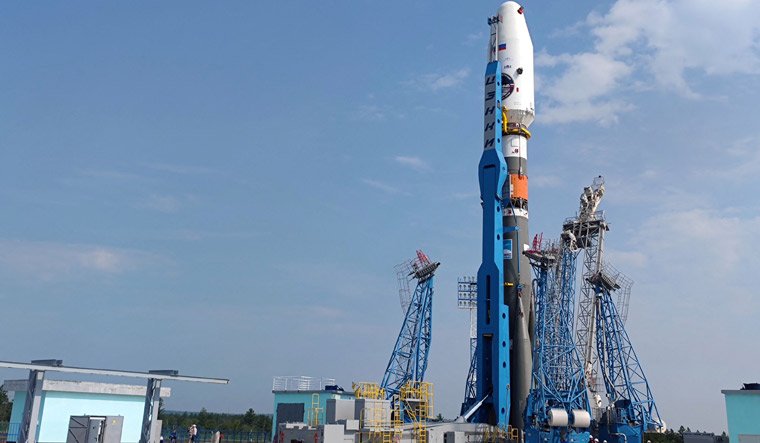
In an exciting development in the world of space exploration, the Russian space agency Roscosmos is gearing up to launch its ambitious lunar mission, Luna 25, to the Moon’s south pole. This mission comes hot on the heels of India’s Chandrayaan-3, which was launched just four weeks ago with the goal of making a soft touchdown on the Moon’s southern region. As these two spacefaring giants prepare for their respective lunar endeavors, the question arises: who will reach the lunar surface first?
According to Roscosmos, the Luna 25 spacecraft is scheduled for launch in the early hours of Friday. The mission’s timeline involves a five-day journey to the Moon, followed by a period of five to seven days in lunar orbit before descending to one of three potential landing sites near the lunar south pole. This timeline sets the stage for a potential head-to-head race between Luna 25 and Chandrayaan-3 to reach the Moon’s surface.
Interestingly, both missions have distinct scientific objectives and unique features. Luna 25 aims to study the composition of the lunar polar regolith, as well as the plasma and dust components of the lunar polar exosphere. In contrast, Chandrayaan-3 seeks to demonstrate a safe and soft landing on the lunar surface, showcase rover mobility, and conduct in-situ scientific experiments.
Beyond their scientific goals, Luna 25 and Chandrayaan-3 also differ in terms of their lander structures, payloads, landing sites, and mission durations. Luna 25’s lander boasts a four-legged base housing landing rockets and propellant tanks, along with an upper compartment containing solar panels, communication equipment, onboard computers, and scientific instruments. Chandrayaan-3 comprises an indigenous lander module, a propulsion module, and a rover equipped with scientific payloads for chemical analysis of the lunar surface.
While Luna 25 is set to operate on the lunar surface for approximately one year, Chandrayaan-3’s lander and rover are expected to function for about one lunar day, equivalent to around 14 Earth days.
Despite the potential race to the Moon’s surface, Roscosmos has assured that the two missions won’t interfere with each other. The Russian Space Agency emphasized that there is enough space for both missions to operate smoothly, with separate landing areas planned.
As the world eagerly anticipates the outcomes of these lunar missions, the competition between Russia’s Luna 25 and India’s Chandrayaan-3 highlights the remarkable advancements in space technology and exploration. Regardless of who reaches the Moon’s surface first, both missions represent significant steps forward in unraveling the mysteries of Earth’s celestial neighbor.
In a broader context, the exploration of the Moon’s south pole holds immense value due to its potential resources. Scientists believe that the region could contain substantial amounts of ice, which could be crucial for extracting fuel, oxygen, and even drinking water—a prospect that adds to the excitement and importance of these lunar missions.
As Luna 25 prepares for launch and Chandrayaan-3 continues its journey, the world watches with anticipation, eager to witness the next chapter in humanity’s quest to explore and understand the cosmos.
Sources By Agencies

